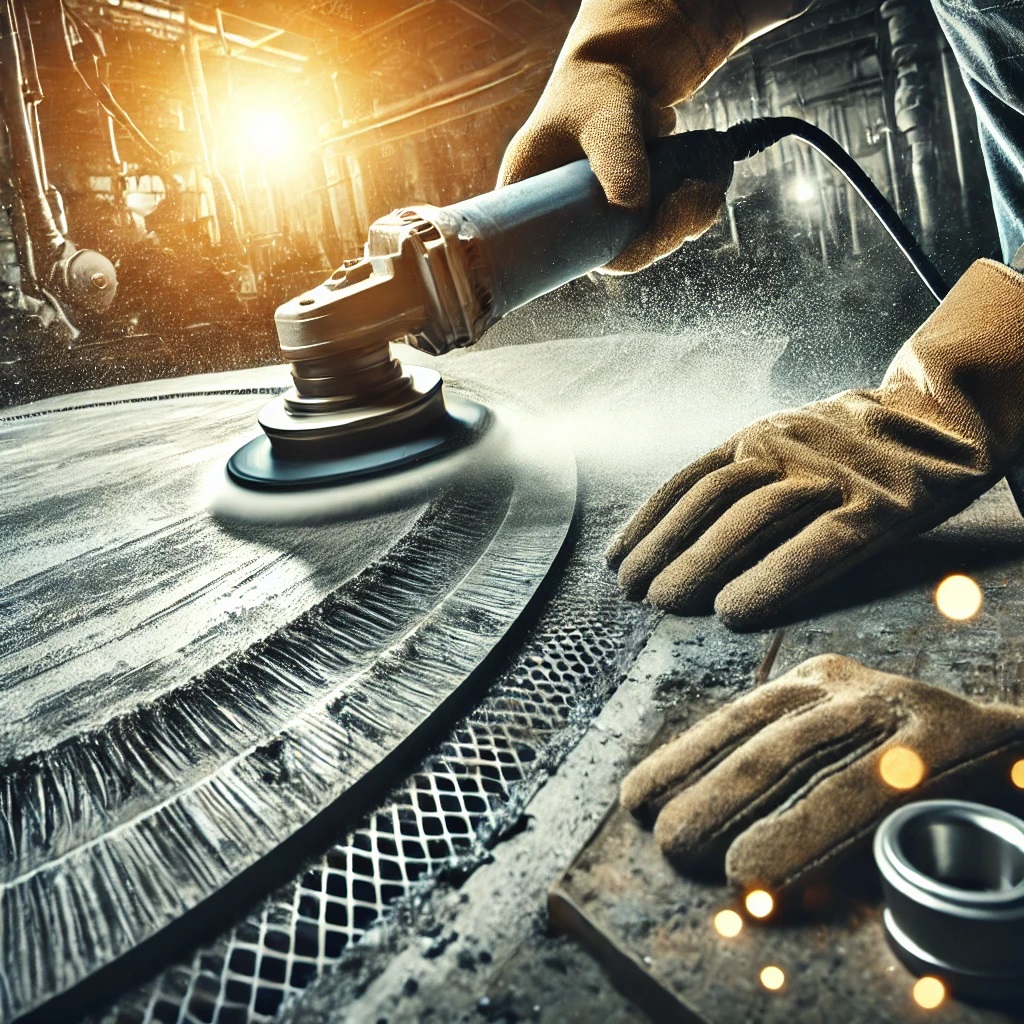
Surface preparation is a critical step in many industries, ensuring that surfaces are properly cleaned, roughened, or smoothed to optimize the adhesion of coatings or other surface treatments. As technology continues to evolve, surface preparation equipment has seen significant advancements, offering enhanced efficiency, safety, and precision. This article explores the latest innovations in surface preparation equipment technology, highlighting how these advancements are revolutionizing industries such as construction, automotive, and manufacturing.
1. Automated Surface Preparation Systems
One of the most notable advancements in surface preparation technology is the introduction of automated systems. These systems leverage robotics and artificial intelligence (AI) to perform surface preparation tasks with minimal human intervention. Automation improves consistency and precision while reducing the risk of human error. These systems can be programmed for various tasks, including cleaning, grinding, and blasting, making them versatile tools across different industries.
For example, automated shot blasting machines can now be integrated with AI to adjust settings in real-time based on surface conditions. This adaptive technology ensures optimal surface roughness and cleanliness, which is crucial for high-performance coatings.
2. Dust-Free Surface Preparation
Dust and debris generated during surface preparation can pose significant health hazards and environmental concerns. Recent technological advancements have focused on creating dust-free or low-dust surface preparation equipment. This includes vacuum-assisted systems that capture dust at the source, preventing it from becoming airborne.
Vacuum blasting, for instance, combines blasting and vacuuming in a single step, significantly reducing dust emissions. This innovation not only protects workers’ health but also ensures compliance with stringent environmental regulations.
3. Eco-Friendly Blasting Media
The shift towards sustainability has led to the development of eco-friendly blasting media. Traditional media such as silica sand have been largely replaced by environmentally friendly alternatives like recycled glass, garnet, and steel shot. These materials are not only safer for workers but also reduce the environmental impact of blasting operations.
Recycled glass, for instance, is a popular choice for surface preparation as it is non-toxic, inert, and highly effective in removing coatings and contaminants. Moreover, it can be reused multiple times, reducing waste and operational costs.
4. Advanced Surface Profiling Tools
Surface profiling is essential to ensure the correct adhesion of coatings. Recent advancements in this area include the development of portable, high-precision surface profiling tools. These devices use laser technology to measure surface roughness with unparalleled accuracy.
Laser profilometers, for example, provide real-time data on surface conditions, allowing for immediate adjustments in the preparation process. This precision ensures that surfaces meet the exact specifications required for various coatings, leading to better performance and longevity.
5. Enhanced Operator Safety Features
Safety remains a top priority in surface preparation, and modern equipment is increasingly designed with advanced safety features. These include ergonomic designs that reduce operator fatigue, automated shut-off systems that prevent accidents, and real-time monitoring of environmental conditions.
For instance, some of the latest surface grinders come equipped with vibration-dampening technology, which minimizes the risk of repetitive strain injuries. Additionally, safety interlocks and emergency stop buttons have become standard features in many surface preparation machines.
6. Digital Integration and Remote Monitoring
The integration of digital technologies into surface preparation equipment is transforming the industry. Modern equipment is now equipped with sensors and connectivity features that enable remote monitoring and control. Operators can adjust settings, monitor performance, and receive alerts about maintenance needs from a distance, increasing efficiency and reducing downtime.
Furthermore, data collected from these machines can be analyzed to optimize processes, predict equipment failures, and improve overall productivity. This digital integration is particularly beneficial in large-scale operations where manual monitoring would be impractical.
FAQs About Surface Preparation Equipment Technology
Q1: What is the role of automation in surface preparation?
Automation in surface preparation increases precision and consistency while reducing human error. Automated systems can perform various tasks like cleaning, grinding, and blasting with minimal human intervention, leading to higher efficiency and better surface quality.
Q2: How does dust-free surface preparation technology work?
Dust-free technology involves the use of vacuum-assisted systems that capture dust and debris at the source during surface preparation. This prevents dust from becoming airborne, protecting workers and ensuring compliance with environmental regulations.
Q3: Why are eco-friendly blasting media important?
Eco-friendly blasting media, such as recycled glass and garnet, are important because they reduce the environmental impact of surface preparation. These materials are non-toxic, can be reused multiple times, and help industries adhere to sustainability goals.
Q4: What advancements have been made in surface profiling tools?
Recent advancements include portable, laser-based surface profiling tools that provide highly accurate measurements of surface roughness in real-time. These tools ensure that surfaces meet the necessary specifications for optimal coating adhesion.
Q5: How has digital integration improved surface preparation equipment?
Digital integration allows for remote monitoring and control of surface preparation equipment. This technology enables operators to adjust settings, monitor performance, and receive maintenance alerts from afar, enhancing efficiency and reducing downtime.
Conclusion
The latest advancements in surface preparation equipment technology are significantly enhancing the efficiency, safety, and sustainability of surface preparation processes. From automated systems and dust-free technologies to eco-friendly media and digital integration, these innovations are setting new standards in various industries. As technology continues to evolve, the surface preparation sector will undoubtedly see even more groundbreaking developments, further optimizing processes and outcomes.
